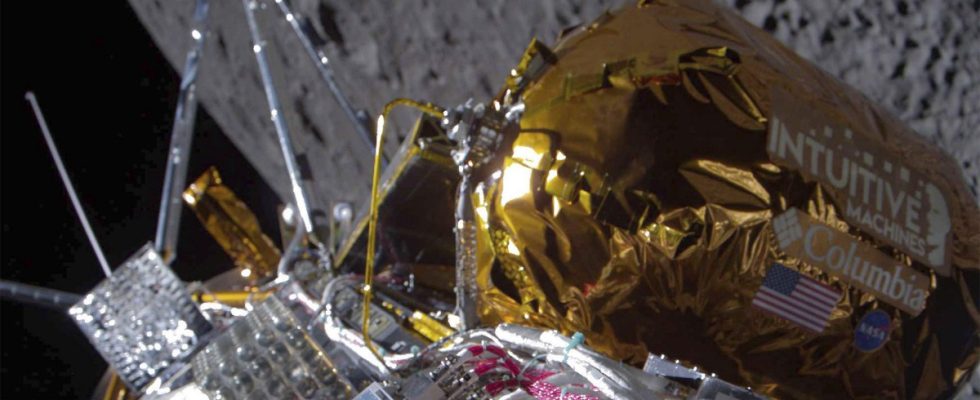For the first time in the history of space travel, a commercial landing on the moon was successful. The unmanned lunar module Nova C of the US company Intuitive Machines touched down on the Earth’s satellite on Friday night, as the US space agency Nasa announced.
The mission will only last about a week – until the sun sets at the landing site and a two-week, ice-cold moonlit night begins. Then the solar cells can no longer supply the spacecraft with energy. The probe, which looks like a rectangular box with six legs, is nicknamed Odysseus. It is a good four meters high, weighs 700 kilograms and carries around 130 kilograms of cargo. On board are several NASA research devices as well as 125 miniature moon sculptures by US artist Jeff Koons.
The probe left the US spaceport Cape Canaveral a week ago with a Falcon 9SpaceX rocket launched. After several days of flight, the probe flew around the moon at an altitude of 92 kilometers until it made its landing approach on Thursday. Odysseus tracked its position using cameras that compare the craters in the field of view with those on a saved map. The probe determined its height using a laser.
Failure is taken into account
The mission is part of NASA’s CLPS (Commercial Lunar Payload Services) program, in which the US space agency works with young, private companies. She wants to save costs. The aim of the missions is to conduct scientific experiments and test technologies on the moon. Among other things, this is intended to prepare manned lunar missions. The landing point of Odysseus is particularly interesting for NASA because water ice has been detected in craters in the region.
Commissioning small and untested companies for this type of mission is a new development at NASA. A lunar mission of its own would cost NASA many times what it pays to private companies. In a bidding competition, the space agency commissioned several companies, including the Texas company Intuitive Machines. The start-up received around $118 million to transport six experiments to the moon. In total, the CLPS program will cost around $2.6 billion by 2028. The fact that a few of the cheaper private missions fail is taken into account.
The first mission of the CLPS program failed
Landing on the moon is extremely difficult. The moon has no atmosphere that would slow down a probe during the landing process. In addition, due to the great distance from Earth, real-time contact is not possible. The probes therefore have to land largely autonomously, which is made even more difficult by the many craters and boulders on the lunar surface.
So far, no private company has managed to land a probe on the moon. It was only in January that the US company Astrobotic sent off its lunar lander. However, the company had to abandon its probe, which was also part of the CLPS program, soon after launch due to problems with the propulsion system. It burned up in the Earth’s atmosphere. In recent years, both an Israeli and a Japanese company failed to attempt an unmanned lunar landing.
The Japanese Space Agency, however, managed to gently land a probe on the moon in January 2024. However, it tipped over and initially had problems with the power supply. Japan was the fifth country, behind the USA, Russia, China and India, to successfully land on the moon unmanned.
With the successful landing of the probe Odysseus This is the first time in over 50 years that a US probe has landed on the moon.

